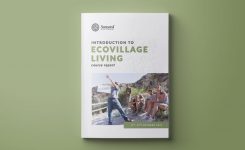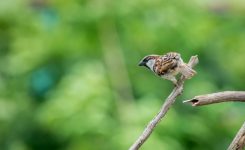Research
Colour Ringing Project for Sylvia Melanocephala (Sardinian Warbler)
The following project is being conducted by Doctor Richard Banham, external Tutor for Leeds University,and bird ringer “experto” ,a member of MILVUS G.O.ES ringing group in S.W.Spain. This exciting project can be a great experience for university students especially from the fields of ecology, environmental science or biology to assist Dr.Banham, but it can also be suitable for everyone with strong passion for birds!
The program involves colour ringing of Sylvia melanocephala in a semi-desert area at Urra Scientific Field Station near Sorbas and at an oasis called Los Molinos de Rio Aguas in the province of Almeria with the assistance of Sunseed. The project started at the beginning of 2018 and was incorporated into the field study course for students from the ecology department at Leeds university from March 18th till March 28th.,and continuing thereon.
Dr.Banham is conducting the program throughout the year with a number of visits to Urra and Sunseed. Each year the project will be incorporated into the university field course, at Urra, always under his supervision, and in future incorporating visits to the site at Los Molinos de Rio Aguas.
Species information
This species has been chosen because it is the commonest resident scrub warbler in the area and the birds perch quite prominently in the Spring as they are holding breeding territories. This warbler is very easy to recognise as there are no other local species with which it could be confused.
Both male and female possess long dark narrow tails with varying amounts of white or off white at the feather tips.Adult males have a jet black head a white chin and throat plus grey wings and back .Females also possess a white chin and throat,but have a grey head with a brown back.Both possess prominent red brown eye rings.
Juveniles look similar to females but possess a brown head.
Immature males have a mixture of brown and black on the head
Sufficient data will be collected by the participating Leeds University students during their Spring visit to give them a viable project for the short time they have available at the field centre. However with participation of Sunseed, much more valuable long term data can be amassed.
Methodology
When the birds are trapped they are fitted on the left leg with the normal metal ring on top of which is fitted a colour ring. Each year the colour of this ring is changed to note a new year.On the right leg is fitted with 2 colour rings, one to denote the period of ringing and the other the age of the bird.All rings are fitted on the tarsus.
Color ring sequences on the right leg are different for Urra and Los Molinos so that the 2 sites can be distinguished
At Urra,and at Los Molinos it is noted at which net the birds are trapped (each net has a special habitat code), and then studied using binoculars or telescope in an attempt to track the limit of each birds territory and to follow its foraging distance if outside the breeding territory. With a continuous colour ringing and observation program together with the trapping of controls, it will be possible to estimate the year on year survival rate of each sex of this species
It will be possible to track the birds outside of the Urra field station and Los Molinos itself as netting is also carried on along and beside the Rio Aguas rambla and in the future at another ringing site which will be set up in the rio at La Herrerdia.
Figure 3 Section of Rio Aguas
In January 2017 at Urra ,four water scrapes were constructed to try to attract both migrants /wintering and resident birds to drink. Mist nets were erected by these scrapes in order to trap and ring them. In March 2018 each scrape was observed by the students/volunteers to see if any of these colours ringed birds came to drink and to note if this was outside their breeding or foraging territories.
At this moment in time these artificial scrapes are being replaced with more permanent materials as the pond liners used soon became very brittle in the Spanish sun and easily cracked losing all the water.
Figure 4 Artificial Scrape
During the first ringing sessions in Spring 2017 with Leeds university students, the results showed that 52% of all the birds trapped were at these scrapes
The colour rings for this project were available early February 2018. Having completed the first ringing session at Urra in February 2018, Dr.Banham visited Sunseed to provide all the necessary details for the project.
Importance of the project
The field station is in an extremely dry area of Almeria province and a further study is being carried out to plot the change in rainfall patterns since 1997. With less and less rain in this area, the presence of permanent small water scrapes could become more and more important to the survival of these local birds , and especially so in late spring through to early autumn when it can be extremely hot and dry. It is important to continue this project for a number of years in order to track any changes in the populations of this species and to observe movements outside the boundaries of the station along the wide dry rambla of the Rio Aguas both towards Sorbas and in the other direction up to Los Molinos de Rio Aguas and even beyond down the valley to where the rio enters the Med.
A few kilometres down the river bed there is an important water source for the Rio Aguas in the form of an aquifer which results in a large permanent pool below the village of Los Molinos de Rio Aguas. This natural water supply and the more lush vegetation, in the past has attracted a large number of birds ,some species of which do not appear at the field station. With permanent artificial water now available at Urra it will be interesting to see if there are any changes in the numbers and survival rates of local Sardinian warblers,compared to Los Molinos.
It is possible with the presence of the permanent water body at Los Molinos that birds ringed at Urra field station may visit this site also to drink especially in the hot dry summer. It will provide interesting data as to how far local birds are prepared to travel to obtain water throughout the year
Post-juvenile dispersal may also reveal some interesting movements.
If the birds are found at Los Molinos other than at the lagoon, it again should be noted where and their activities e.g.feeding. This species is mainly insectivorous but at certain times of the year ,Winter and Spring,supplements the diet with pollen/nectar from suitable flowering plants.This can be shown by the presence of yellow or orange on the chin/throat area plus a sticky forehead which should again be very useful to note.
If trapped feather samples of this part of the bird will be taken and sent for analysis to determine from which plant the pollen/nectar was taken..
N.B The population dynamics for Sardinian warblers (e.g.increase or decrease of population totals year on year,numbers of breeding males and females, numbers of juveniles,survival rates) can be followed in relation to the variation in rainfall and the considerable increase in underground water extraction for growing new large olive tree plantations in the area.
How can you get involved in the project?
For those interested, all that is necessary for them to do, is to make a note of,the sequence of colour rings on both legs, the sex of the bird ,the date and place of observation. Colour pictures and a field guide are provided by Dr.Banham to assist identification. A pair of simple binoculars is needed to observe the birds.
If you are interested in this project…
Get in touch with us to join Sunseed for a regular mid-term or long-term volunteering or through a funded University placement. For your involvement in the project we will put you in direct contact with Dr. Banham for further details and information.
For further questions you may contact Dr.Banham at: dr.r.j.banham@gmail.com
BREAKING NEWS:
The bird color ringing project at Urra Field Station and Los Molinos de Rio Aguas has now been accepted by EURING,which gives special permissions for all bird color ringing projects in Europe.Our project is one of some 5,200 in Europe.
The project for this bird color ringing program can be found on the following link
Sylvia melanocephala / Sardinian Warbler : http://www.cr-birding.org/node/5172
Combination of :
∙ c-ring over metal (on left leg).
∙ 2 c-rings (on right leg)



